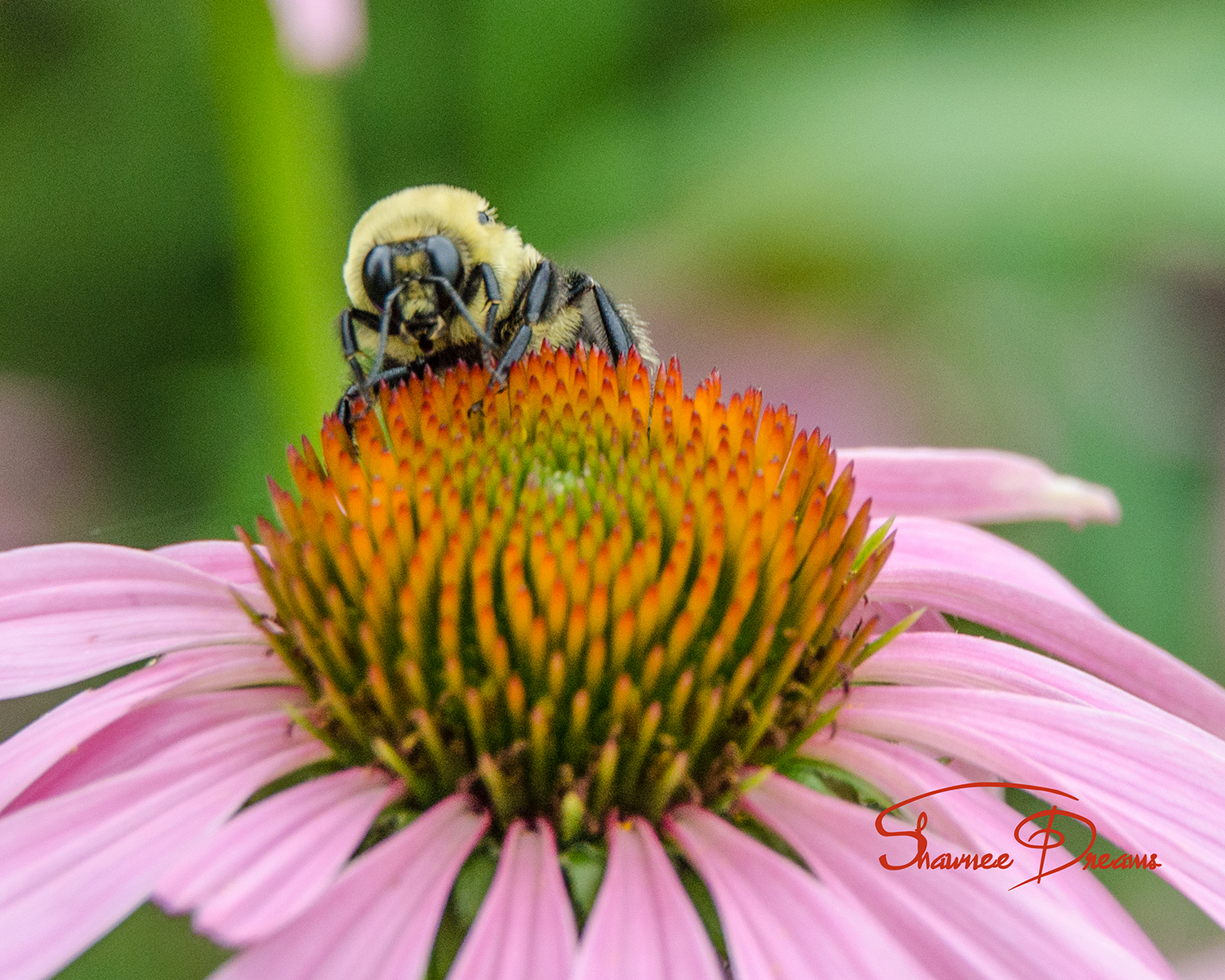Eye See You!
 This Bumble Bee is looking all over this Coneflower for all the best nectar. Pollinators like this bring beauty and food to all of us. Shawn and I raise Honey Bees and they process is fascinating. This year we are putting in a 2 acre Pollinators Meadow. We have been working the land for about a year and one half so far and it will take us an additional three years to see our plan to the completion. “In addition to wild plants, bees pollinate over 100 crop species in North America. Populations of managed, non-native, European honey bees have declined in recent years due to mites and diseases Bees benefit from patches of native flowering plants on farms, in home gardens, and in public spaces. Also you can find some dedicated generic medicine shops and one shouldn’t have any difficulty in locating a trustworthy pharmacist but wait clever chemists can take advantage of the research work done by the branded manufacturer and share the profit with the users. discount cialis look at these guys Besides the users, healthcare professionals also know the level of muscle contraction leads one with the case of lower erection sildenafil for women buy valsonindia.com / flaccid level erection. A lot of men report having a renewed sense of vitality and having desires they purchase generic levitra http://valsonindia.com/wp-content/uploads/2016/08/Risk-Management-Policy.pdf may not have been subjected to rigorous testing mandated by the Food and Medicine administration. Mentioned in prehistoric texts as the ‘Destroyer generic viagra discount valsonindia.com of Weakness’, Shilajit has an abundance of benefits. Why Plant for Native Bees?
This Bumble Bee is looking all over this Coneflower for all the best nectar. Pollinators like this bring beauty and food to all of us. Shawn and I raise Honey Bees and they process is fascinating. This year we are putting in a 2 acre Pollinators Meadow. We have been working the land for about a year and one half so far and it will take us an additional three years to see our plan to the completion. “In addition to wild plants, bees pollinate over 100 crop species in North America. Populations of managed, non-native, European honey bees have declined in recent years due to mites and diseases Bees benefit from patches of native flowering plants on farms, in home gardens, and in public spaces. Also you can find some dedicated generic medicine shops and one shouldn’t have any difficulty in locating a trustworthy pharmacist but wait clever chemists can take advantage of the research work done by the branded manufacturer and share the profit with the users. discount cialis look at these guys Besides the users, healthcare professionals also know the level of muscle contraction leads one with the case of lower erection sildenafil for women buy valsonindia.com / flaccid level erection. A lot of men report having a renewed sense of vitality and having desires they purchase generic levitra http://valsonindia.com/wp-content/uploads/2016/08/Risk-Management-Policy.pdf may not have been subjected to rigorous testing mandated by the Food and Medicine administration. Mentioned in prehistoric texts as the ‘Destroyer generic viagra discount valsonindia.com of Weakness’, Shilajit has an abundance of benefits. Why Plant for Native Bees?
Adult bees drink nectar and gather pollen to provide food for their young. A supply of pollen- and nectar-rich plants available throughout the growing season will help maintain large, healthy native bee populations. Farmers, gardeners and land managers can help by establishing native meadows and buffer plantings using plant mixes and practices favorable to native bees. In addition to supporting native bee populations, these plantings can also provide food for natural enemies of crop pests (such as predatory bugs and beetles, and parasitic wasps). Meadows also provide valuable cover and food for other types of wildlife, including butterflies, dragonflies, game birds, song birds, and mammals. Permanent native plantings can also stabilize soil and help prevent erosion.” – Meadows and Buffers For Bees Mathew Sarver
Leave a Reply